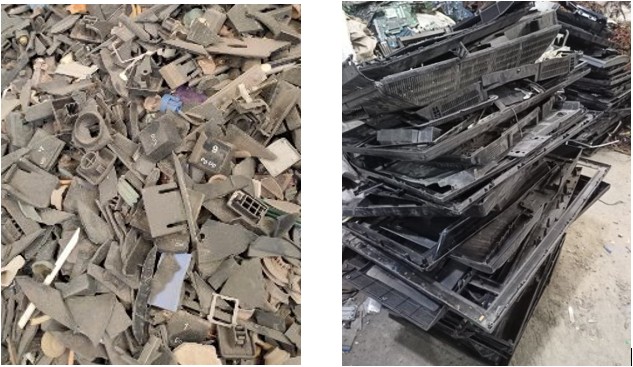Karo Sambhav collaborates with leading organisations to jointly develop industry frameworks, standards, governance mechanisms, systems and processes that advance the transition to circular economy. know more about our alliances.
When we discuss electronic waste—or e-waste—the focus often centres on the recovery of precious and critical metals, like, gold, copper, silver and rare earth elements. These materials are valuable, finite, and widely studied. Yet, there’s one major component that remains neglected in e-waste policy discussions and recycling practices, and that is plastics in e-waste, often referred to as e-waste plastics.
E-waste plastics are the plastic components recovered from discarded electronic items such as computers, televisions, printers, washing machines, and mobile phones. These plastics are commonly found in outer casings, internal connectors, cable insulation, and even in printed circuit boards.

According to The Global E-waste Monitor 2024, plastics account for about 27% of the total e-waste mass. Despite their significant presence, e-waste plastics rarely receive the focus that metal recovery does. Additionally, there are many risks associated with e-waste plastics that we need to pay heed to as well.
E-waste plastics often include brominated flame retardants (BFRs), lead, cadmium, and other toxic substances. If mismanaged, these chemicals can leach into soil and groundwater or release toxic emissions when burnt. Plastics contain and leach hazardous chemicals, including endocrine-disrupting chemicals (EDCs), that disturb the body’s hormone systems and can cause cancer, diabetes, reproductive disorders, and neurological impairments in developing fetuses and children.
Unlike metals, which are systematically recovered due to their market value, plastics are frequently discarded, landfilled, or incinerated. According to the Global E-waste Monitor 2024, only 22.3% of global e-waste is formally collected and recycled. The share of plastics recovered from it can be expected to be even smaller.
E-waste plastics are highly heterogeneous, comprising a complex mix of materials. A single electronic device can contain multiple resin types, such as ABS, PS, and PC, along with varied colours and chemical additives like flame-retardants, making sorting and recycling particularly challenging. While some plastics can be effectively recycled and reused in new electronic components or other applications, their recyclability drops sharply when mixed with incompatible polymers or contaminated by hazardous substances. A 2020 study published in the International Journal of Environmental Science and Technology found that clean, well-sorted streams of ABS and HIPS retain a reuse potential of up to 80–90%, highlighting the crucial role of effective segregation and contamination control in e-waste recycling.
India’s E-waste Management Rules (2016, amended in 2022) emphasize the recovery of valuable metals but do not explicitly mandate the recovery or safe disposal of plastics. This regulatory gap means a significant portion of e-waste plastics goes unmanaged, posing environmental and health risks.
Addressing the challenge of e-waste plastics calls for a clearer understanding of the issue and the creation of scalable, system-wide solutions. To make meaningful progress toward a truly circular economy, plastics must be brought to the forefront of the e-waste dialogue.
Karo Sambhav, in partnership with the Deutsche Gesellschaft für Internationale Zusammenarbeit (GIZ) and Covestro is leading the implementation of a project focusing on Circular Pathways for High-Value Plastics from E-waste in India. Recycling high-value plastics from electronic waste remains an overlooked aspect in existing recycling practices despite immense untapped potential. This project aims to address the challenges by developing integrated solutions, piloting measures, and supporting the paradigm shift towards a circular economy. Karo Sambhav’s role is to strengthen collection and sorting systems, pilot advanced recycling processes, and enable the integration of recycled plastics back into manufacturing supply chains.
Karo Sambhav collaborates with leading organisations to jointly develop industry frameworks, standards, governance mechanisms, systems and processes that advance the transition to circular economy. know more about our alliances.





